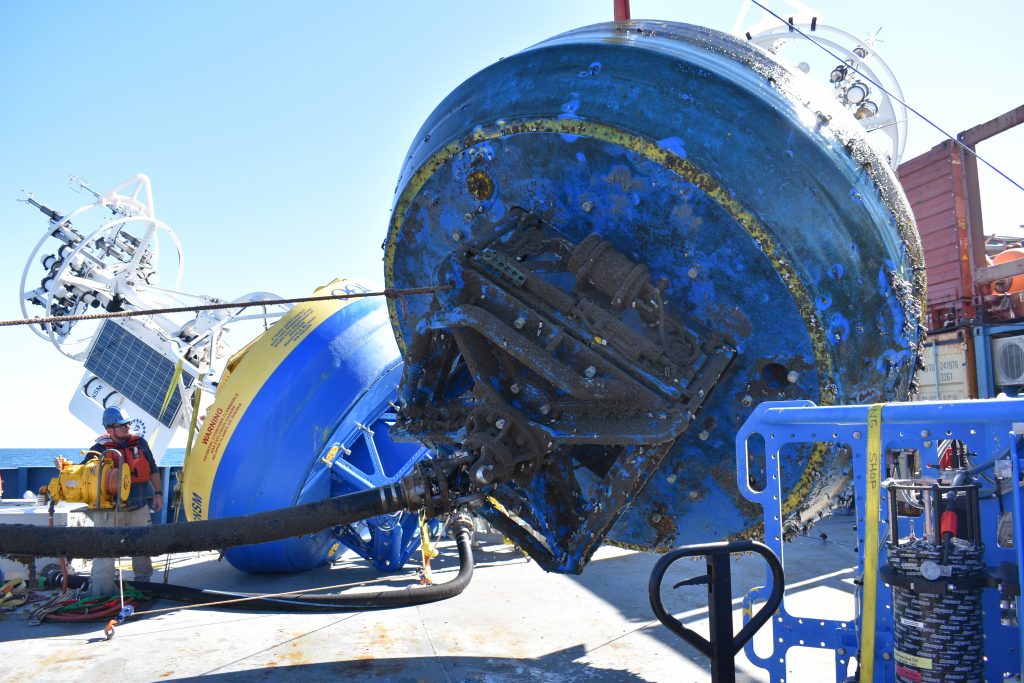Ever wonder why the Pioneer Array moorings are replaced—or “turned”—every six months? One of the main reasons is biofouling.
Over time, marine organisms such as algae, barnacles, and other sea life attach themselves to any surface submerged in the ocean. While this growth is a natural process, it can start to interfere with instrument performance after several months, affecting data quality and the operation of sensors and mechanical components.
After six months at sea, equipment like the Central Surface Mooring and the Near Surface Instrument Frame (NSIF) often come back to deck coated in layers of marine growth. In contrast, their freshly deployed replacements start their mission looking clean and pristine—though only for a short while.
Regularly turning the moorings ensures that OOI continues to collect high-quality, uninterrupted ocean data throughout the year, even in the challenging conditions of the Mid-Atlantic Bight.

Photo Credit: Rebecca Travis, WHOI

Photo Credit: Rebecca Travis, WHOI

Photo Credit: Rebecca Travis, WHOI
Recent Updates